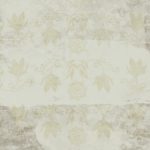We’ve all heard the advice. Take shorter showers. Don’t leave the water running when you brush your teeth. But how often do you really think about your water consumption? Even with the knowledge that water is a precious resource, many homeowners pay little attention to how their own habits affect water consumption in the home. After all, water is cheap and always available. Just turn on any tap and there it is. But that low price can be misleading. The average cost of municipal water has gone up 10% since 2009, and it’s only going to get higher. So if you’re building new homes or remodeling existing homes, there are some important water conservation trends contractors need to know about. While behavior changes can create some savings, changes in how we build homes will be a major factor in water conservation now and in the future.
The Green Building Revolution
The green building revolution is already in full swing. Many new commercial buildings are seeking out LEED certification. LEED, or Leadership in Energy and Environmental Design, is the world’s largest green and sustainable building certification. It can apply to all types of buildings, industrial, commercial, and residential, as well as campuses, neighborhoods, and even cities. Contractors can also be LEED certified, and more and more building projects are requiring LEED certified contractors.
Whether or not you plan to become a LEED-certified builder or have your project LEED certified, conservation and green building are trends that are here to stay. Water and energy efficiency are great selling points. They can reduce environmental impact and utility costs, a double win for your clients. So if you haven’t already, you need to start thinking about building green as you grow your business.
Another reason to learn to build green is that it can be a competitive edge. Let’s face it, construction is competitive, and it’s not always possible to give the lowest bid on a project. Having something that sets you apart from the competition is crucial, and knowledge of green building practices is a huge advantage.
Water Conservation in Homes
Water conservation in homes comes down to two things: human behavior and water-efficient construction. While changing human behavior is important, designing a home for water efficiency can provide significant fool-proof water savings. Also, when the design is done right, water-efficient building practices can work hand-in-hand with homeowners to help them change their behavior.
The largest waste of water is definitely centered around the bathroom. Bathroom sinks, flushing toilets, and long showers all contribute to water waste. When we talk about water use, we often use the term “indoor drain”. That’s the amount of water you use that simply flows down the drain, as opposed to water used for other purposes, like cooking or watering plants. 60% of a home’s indoor drain can come from the bathroom. That’s 12% of your total water consumption, both indoors and out.
Installing water-efficient appliances in your bathroom and around your home can make a huge difference in water usage even with minimal changes in behavior. The most common certification for water-efficient products in the U.S. is WaterSense, a certification managed by the U.S. Environmental Protection Agency (EPA). Using WaterSense certified products can significantly reduce water use and water waste.
Save on Hot Water
Remember that long, hot shower you took this morning? Experts will tell you that taking a shorter shower can save lots of water, and they’re right. But there is another source of wasted water we rarely think about. You almost never turn on the shower and hop right in. Instead, you wait for the water to heat up. The cold water has to drain from your pipes and is slowly replaced with hot water from your water heater. All the while, gallons of precious water pouring down your drain, without any use at all. Even if you shorten your shower, it’s hard to get around all that waste just letting the water get hot.
Imagine how much less water you could use if the water came out of the tap hot as soon as you turned it on. Modern water heating systems can do just that. By combining a centralized water heater, shorter and insulated pipes, and a closed-loop system, you can reduce the hot water lag-time significantly. Basically, a closed-loop system uses a pump to send cold water back to the water heater instead of down your drain. It can be activated by hi-tech occupancy sensors, or a low-tech button or switch. When you enter the bathroom, just flip the switch. By the time you are ready to shower, your hot water is right there, from the moment you turn on the faucet.
The water flowing back into the water heater is also warmer than the municipal supply. This makes a closed-loop system more energy-efficient, as it needs less energy to reheat the water. The energy savings alone can be a great selling point, even for consumers who are less excited by water conservation.
Low-Flow Toilets
We’ve all heard of how much water a toilet can use. Some older toilets used as much as 7 gallons a flush. But since 1994, federal law has required all new residential toilets in the U.S. to use 1.6 gallons or less per flush. Early low-flow toilets were sometimes inefficient at disposing waste, but modern designs work just fine. Some toilets now use pressurized air to help things drain. That’s the amazing whoosh and slight pressure you feel on the push button on some toilets.
Another new design feature is the dual-flush toilet. Dual-flush toilets were originally designed in Australia, the driest inhabited continent on the planet. A dual-flush toilet has two buttons, one for liquid waste and one for solid waste. The liquid waste flush uses a tiny .8 gallons per flush. That’s less than 15% of the water used by some older toilets.
Using low-flow toilets can save $90-$100 a year in water costs. Even for homeowners less concerned with water conservation, money talks. The low-flow toilets are required by law. However, models that are even more efficient, while slightly more expensive, are easily paid for over the lifetime of the toilet.
WaterSense and Energy Star® Certified Appliances
Outside of the bathroom, appliances such as washing machines and dishwashers can use a lot of water.
For washing machines, many models are now available with Energy Star® certifications. Energy Star®, like WaterSense, is an EPA-backed certification. It doesn’t just measure water consumption. It also measures electricity use and other efficiency and environmentally friendly factors. By installing an Energy Star® washing machine, consumers can save money and reduce their environmental impact. For the most part, certified washing machines are competitively priced with other, non-certified machines. Certified washing machines often include sensors that can control how much water is used based on load size, among other savings. However, consumer behavior is also a factor. Running the washing machine only when full is the only way to achieve the full savings on both water and electricity.
Dishwashers tend to create smaller savings. Energy Star® certified dishwashers can use less water and electricity, but the difference between certified and non-certified appliances is smaller than it is for washing machines. However, any dishwasher uses much less water than hand-washing. So besides saving you time and energy, using a dishwasher, any dishwasher, can help save water.
The Role of Contractors
When it comes to designing new homes or other buildings, contractors can often have input about energy and water use. For smaller projects and renovations, contractors can often suggest ways to improve the designs and make them more efficient. On large projects, especially design-build projects, LEED certification may be required. In any situation, knowing how to stay green in general and water-efficient specifically can help clients and contractors.


